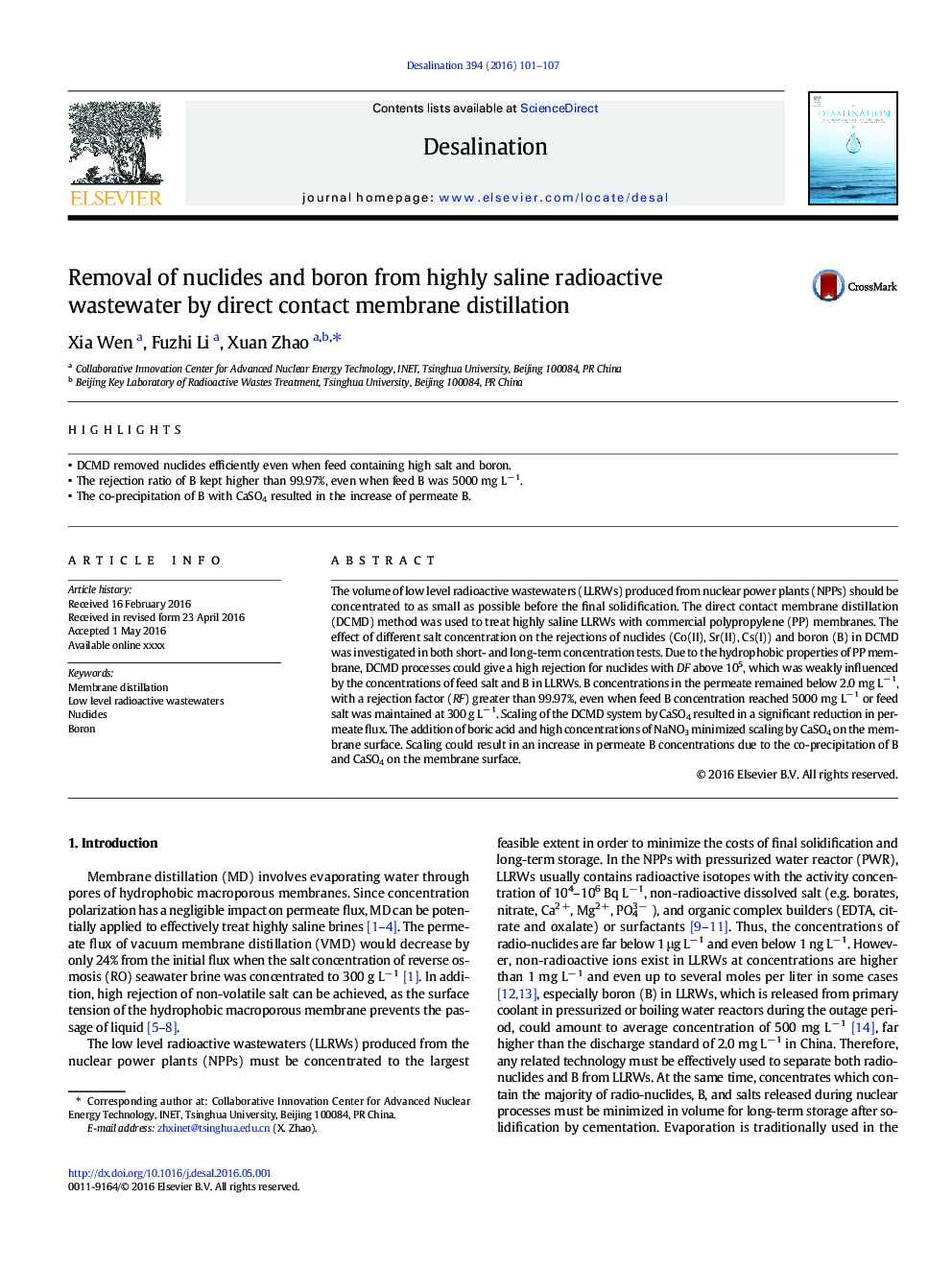| کد مقاله | کد نشریه | سال انتشار | مقاله انگلیسی | نسخه تمام متن |
|---|---|---|---|---|
| 622747 | 1455301 | 2016 | 7 صفحه PDF | دانلود رایگان |
عنوان انگلیسی مقاله ISI
Removal of nuclides and boron from highly saline radioactive wastewater by direct contact membrane distillation
ترجمه فارسی عنوان
حذف نوکلئوتید و بور از فاضلاب رادیواکتیو بسیار شور از طریق تقطیر غشای مستقیم تماس
دانلود مقاله + سفارش ترجمه
دانلود مقاله ISI انگلیسی
رایگان برای ایرانیان
کلمات کلیدی
تقطیر غشایی، فاضلاب های رادیواکتیو پایین سطح، نوکلئوتید، بور،
موضوعات مرتبط
مهندسی و علوم پایه
مهندسی شیمی
تصفیه و جداسازی
چکیده انگلیسی
The volume of low level radioactive wastewaters (LLRWs) produced from nuclear power plants (NPPs) should be concentrated to as small as possible before the final solidification. The direct contact membrane distillation (DCMD) method was used to treat highly saline LLRWs with commercial polypropylene (PP) membranes. The effect of different salt concentration on the rejections of nuclides (Co(II), Sr(II), Cs(I)) and boron (B) in DCMD was investigated in both short- and long-term concentration tests. Due to the hydrophobic properties of PP membrane, DCMD processes could give a high rejection for nuclides with DF above 105, which was weakly influenced by the concentrations of feed salt and B in LLRWs. B concentrations in the permeate remained below 2.0 mg Lâ 1, with a rejection factor (RF) greater than 99.97%, even when feed B concentration reached 5000 mg Lâ 1 or feed salt was maintained at 300 g Lâ 1. Scaling of the DCMD system by CaSO4 resulted in a significant reduction in permeate flux. The addition of boric acid and high concentrations of NaNO3 minimized scaling by CaSO4 on the membrane surface. Scaling could result in an increase in permeate B concentrations due to the co-precipitation of B and CaSO4 on the membrane surface.
ناشر
Database: Elsevier - ScienceDirect (ساینس دایرکت)
Journal: Desalination - Volume 394, 15 September 2016, Pages 101-107
Journal: Desalination - Volume 394, 15 September 2016, Pages 101-107
نویسندگان
Xia Wen, Fuzhi Li, Xuan Zhao,
